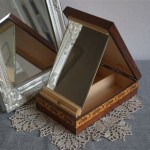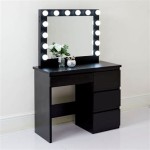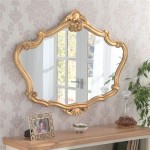Mercury Glass Mirrors: A Reflective Glimpse into History and Design
Mercury glass, also known as silvered glass, possesses a distinctive antique charm that adds a touch of vintage elegance to any space. Its unique reflective qualities and slightly distressed appearance have made mercury glass mirrors a popular choice for both traditional and contemporary interiors. This article explores the history, manufacturing process, design versatility, and care tips for these captivating mirrors.
A Brief History of Mercury Glass
Mercury glass originated in the early 19th century as a less expensive alternative to silvered glass. German chemist Justus von Liebig developed the process, which involved coating glass with a solution of silver nitrate. This process provided a reflective surface similar to silver but at a fraction of the cost. The term "mercury glass" is a misnomer, as mercury was not used in the original manufacturing process. The name likely arose from the silvery appearance reminiscent of the liquid metal.
The Manufacturing Process: From Silver Nitrate to Antique Patina
The traditional manufacturing process of mercury glass involves several intricate steps. First, a double-walled glass object is created, leaving a small opening. A solution of silver nitrate, mixed with other chemicals like glucose and ammonia, is then poured into the cavity between the glass layers. This solution reacts with the glass, depositing a thin layer of silver onto the inner surface. After the silvering process is complete, the opening is sealed, and the piece is dried. The resulting mirror surface has a characteristic antique look due to the slight imperfections and variations in the silvering process. Over time, the silver can tarnish or oxidize further, enhancing the aged appearance.
Distinguishing Features of Mercury Glass Mirrors
Several characteristics help identify authentic mercury glass mirrors. The reflective surface often exhibits slight imperfections, irregularities, and a subtly mottled appearance, unlike the flawless reflection of modern mirrors. Authentic pieces may show signs of aging, like spotting or tarnishing, which adds to their vintage appeal. Examining the back of the mirror can also be revealing; the backing paint may show signs of age and wear. The glass itself is typically thinner than modern mirrors, and bubbles or imperfections within the glass can sometimes be observed. Finally, the overall appearance evokes a sense of age and craftsmanship that is difficult to replicate in mass-produced modern pieces.
Design Versatility: Incorporating Mercury Glass Mirrors into Various Styles
Mercury glass mirrors can be incorporated into a wide array of interior design styles. In traditional settings, they complement antique furniture and classic décor. In modern spaces, they provide a touch of vintage charm and contrast with sleek, contemporary lines. Their reflective qualities can brighten up a room and create an illusion of spaciousness. Mercury glass mirrors come in various shapes and sizes, from small decorative accents to large statement pieces, offering flexibility in design applications. Their silvery hues blend seamlessly with various color palettes, adding a touch of understated elegance.
Types of Mercury Glass Mirrors Available
The market offers a diverse range of mercury glass mirrors to suit various tastes and decorative needs. Traditional wall mirrors provide a classic focal point. Smaller vanity mirrors offer a touch of vintage glamour to a dressing table. Ornate framed mirrors add an element of grandeur to a room. Unique shapes, like sunbursts or stars, can inject personality into a space. Antique mercury glass mirrors, with their authentic patina and imperfections, are highly sought after by collectors. Contemporary reproductions offer a more affordable option while still capturing the essence of vintage charm.
Caring for and Maintaining Mercury Glass Mirrors
Proper care is essential to preserve the beauty and longevity of mercury glass mirrors. Avoid using harsh chemicals or abrasive cleaners, as these can damage the delicate silvered surface. Instead, opt for gentle cleaning solutions like diluted dish soap and warm water. Soft cloths are recommended for cleaning, preventing scratches. Avoid exposing mercury glass mirrors to excessive moisture or direct sunlight, as these can accelerate tarnishing and deterioration. Handle the mirrors with care to avoid chipping or cracking the glass. Regular dusting with a soft brush or cloth will help maintain their shine and prevent the buildup of dust and debris.
Identifying Antique vs. Reproduction Mercury Glass Mirrors
Distinguishing between antique and reproduction mercury glass mirrors requires careful observation. Antique pieces typically exhibit a more pronounced patina and signs of wear. The silvering may be uneven or show areas of tarnishing, indicative of age. Bubbles within the glass are more common in older pieces due to variations in the manufacturing process. Examining the backing paint for signs of age and the overall craftsmanship can also provide clues to a mirror’s authenticity. Consulting with antiques experts can offer valuable insights and authentication services for valuable or historically significant pieces.
The Enduring Appeal of Mercury Glass Mirrors
The enduring appeal of mercury glass mirrors lies in their unique combination of vintage charm, reflective beauty, and design versatility. Their ability to enhance both traditional and contemporary spaces makes them a timeless design element. Whether an antique treasure or a modern reproduction, a mercury glass mirror adds a touch of elegance and history to any interior.

Antique Mercury Glass Mirror 19th Century For At Pamono

Mercury Mirror

Flipping Houses Home Renovation In Silicon Valley

How To Create Mercury Glass Jennifer Rizzo

Through The Looking Glass Ix Mercury Mirror Old Mirrors Shabby

Antique Mercury Glass Mirror 19th Century Chairish

French Antique Vintage Mirror Beautiful Unique Glass Quick Ship

Flipping Houses Home Renovation In Silicon Valley

Antique Mercury Glass Mirror 19th Century For At Pamono

Diy Mercury Glass Gilded Mirror Made From Old Photo Frames








